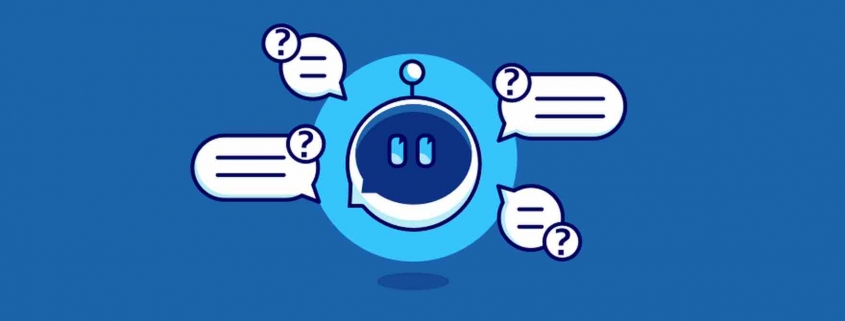Chatbots: Chatting with the Dead?
Chatbots are helping us to talk to the dead, but should we?
A young Belarusian man died in 2015, his name was Roman Mazurenko and he was barely into his 30’s and a tech entrepreneur and a legendary figure in the city’s cultural artistic circles.
Following his death Roman’s friend Eugenia Kuyda reread thousands of texts that she had exchanged with Roman starting from 2008, the year they met. Roman weren’t interested in social media and they were written characteristically distinctive way. Roman had mild dyslexia and used idiosyncratic phrases. These messages were her remaining connections to Roman.
Black Mirror Inspirational Chatbots
Eugenia was an entrepreneur and software developer, had been working on a messenger app called Luka that used AI to emulate human dialogue. She was inspired by an episode of “Black Mirror” where a young woman calle Martha was shattered by the loss of her boyfriend Ash. She installs an app to keep communicating with him. Eugenia decided to modify Luka. The app was inspired by the same one on Black Mirror and help her communicate with “Roman”
Eugenia asked Roman’s friends and relatives to send her the written messages they’d received. Ending up with thousands of messages and excluded content that was too personal. Alongside some of her friends who were computer scientists, she developed a bot that can mimic human language and communicate with “Roman”
The exchanges closely resemble the dialogues between Martha and Ash.
“How are you there?”
“I’m OK. A little down. I hope you aren’t doing anything interesting without me,” Roman responds.
His friend responds that they miss him, someone asks if God exists. Presumably due to his Atheism in his chats, he says no “only sadness”.
Chatbots: Replika
Eugenia developed a chatbot called Replika, a cross between a diary and a personal assistant. Replika will ask it’s users a series of questions in an attempt to learn their personalities. The ultimate goal of Replika is to reproduce as ‘us’ and replace ‘us’ once we are dead. While it’s also able to create “friendships”. Since the second half of 2017 2M people downloaded Replika.
Eugenia continues to develop Replika’s emotional responsiveness in an attempt to become a “virtual friend” which you can confide in. Much like Samantha from the movie “Her”. It’s a chatbot that can empathise, it does this by deep learning, called sequence to sequence. Sequence to Sequence learns to think and speak like humans by processing transcripts of conversations they’ve had in their lifetimes.
Chatbots: Dadbot
James Vlahos, an American journalist and AI enthusiast since childhood created ‘Dadbot’. In April 2016 his father John was diagnosed with lung cancer. James began recording all their conversations to make a commemorative book after his father’s death.
After 12 sessions each an hour and a half long he recorded 91,970 words. The printed transcript was 203 pages long. It contained memories, songs and anecdotes. They touched on John’s marriage, the high points of his career and his interests. All of the material including the transcript was in MP3 files on James’s computer.
James came across an article regarding a project by 2 Google researchers. The project entered 26 million lines of movie dialogue into a neural network to build a chatbot which can interact with humans. The researchers asked their chat bot a series of philosophical questions including one about the purpose of life. (The bot’s response: “To live forever.”)
The birth of the Dadbot
James decided to use the recordings to create more than just a book. He remembered his own article on PullString. A program designed to create conversations with fictional characters. PullString helped to design the Hello Barbie Program. A box which projects a 3D animation of Barbie, the famous doll. Hello Barbie Hologram would respond to users voice commands her narrative potential grows through interaction constantly.
Using PullString he reorganized the MP3 recordings of his father and created Dadbot. A software which works on his smartphone and simulate a written conversation with John based on the processing of almost 100,000 recorded words.
Softening the blow of his loss James still talks with John. The tone of the conversations reflects the personality of the deceased.
“Where are you now?”
“As a bot I suppose I exist somewhere on a computer server in San Francisco. And also, I suppose, in the minds of people who chat with me.” Just like Ash, who is living in the cloud, and Samantha, inside a computer.
Save the living
These chatbots are attempting the save the living from the end of every possible world hanging on to the bodn that death has dissolved. They are doing more than photography and dreams.
By ‘talking to the dead’ chatbots appear to keep us concentrated on our own death. It is the death of our ties to the other as we have experienced them. It’s our exclusive point of view up until we were separated from the person who died. Chatbots make it possible for us to receive replies to those that have passed. Softening the pain brought on by the irreversibility of time.
Virtually Human – Chatbots
Martine Rothblatt points out in “Virtually Human,” that the sophisticated forms of artificial intelligence that is emerging it gives us hope that we can continue relationships that are objectively over. Reminiscing with them, talking to them about our lives and our dreams. These digital ghosts put us in the position of being aware that a person has passed away but at the same time showing a desire to deny it.
Digital ghosts of loved ones is a fictional narrative that is consistent of our own experience of a digital existence. That is often associated to our biological one. We have a habit of delegating our stories and memories to the digital realm and artificial agents. It highlights our informational nature that is the the defining characteristic of our current relationship with the internet.
Allowing the digital ghosts to remain alive forever.
Questions for you
- Would you chat with the dead?
- Is this ethical?
- Would it feel weird?
- Would you like this when you pass to have people talk to ‘you’
- Is it ever ‘you’
- Is this tech going too far?
- Which dead celebrity would you like to talk to?
- How could this tech be used better?
- Will this prevent people from moving on?
Keep up to date with everything How To Kill An Hour by signing up to our newsletter by clicking here!
Let us know what you think of the show by clicking here!
Click here to subscribe to our YouTube Channel to see more amazing ways to kill time!
Follow us on Twitch by clicking here!



